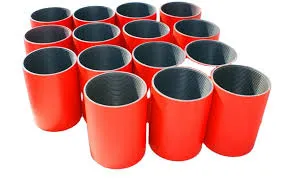- Afrikaans
- Albanian
- Amharic
- Arabic
- Armenian
- Azerbaijani
- Basque
- Belarusian
- Bengali
- Bosnian
- Bulgarian
- Catalan
- Cebuano
- Corsican
- Croatian
- Czech
- Danish
- Dutch
- English
- Esperanto
- Estonian
- Finnish
- French
- Frisian
- Galician
- Georgian
- German
- Greek
- Gujarati
- Haitian Creole
- hausa
- hawaiian
- Hebrew
- Hindi
- Miao
- Hungarian
- Icelandic
- igbo
- Indonesian
- irish
- Italian
- Japanese
- Javanese
- Kannada
- kazakh
- Khmer
- Rwandese
- Korean
- Kurdish
- Kyrgyz
- Lao
- Latin
- Latvian
- Lithuanian
- Luxembourgish
- Macedonian
- Malgashi
- Malay
- Malayalam
- Maltese
- Maori
- Marathi
- Mongolian
- Myanmar
- Nepali
- Norwegian
- Norwegian
- Occitan
- Pashto
- Persian
- Polish
- Portuguese
- Punjabi
- Romanian
- Russian
- Samoan
- Scottish Gaelic
- Serbian
- Sesotho
- Shona
- Sindhi
- Sinhala
- Slovak
- Slovenian
- Somali
- Spanish
- Sundanese
- Swahili
- Swedish
- Tagalog
- Tajik
- Tamil
- Tatar
- Telugu
- Thai
- Turkish
- Turkmen
- Ukrainian
- Urdu
- Uighur
- Uzbek
- Vietnamese
- Welsh
- Bantu
- Yiddish
- Yoruba
- Zulu
casing coupling dimensions
Understanding Casing Coupling Dimensions in Oil and Gas Operations
Casing coupling dimensions play a critical role in the oil and gas industry, particularly in well construction and integrity. Casing, a series of pipe sections used to line the walls of a drilled well, not only supports the wellbore but also helps to isolate different underground formations. Couplings are connectors that join these casing sections, ensuring continuity and structural strength throughout the well. In this article, we delve into the importance of casing coupling dimensions, their specifications, and the implications for drilling operations.
The Importance of Casing Couplings
Casing couplings are essential for maintaining the integrity of the wellbore. They provide the necessary structural support and prevent collapse, which can occur under the pressure of surrounding rock and fluids. Properly designed and manufactured couplings can withstand high pressures and temperatures, which are common in drilling environments. Their dimensions, including length, outer diameter, and wall thickness, are critical parameters that influence the overall performance of the casing string.
In addition to mechanical stability, wellbore integrity is crucial for preventing issues such as fluid migration between formations, which can lead to contamination of aquifers or unwanted pressure buildup. Therefore, accurate coupling dimensions are not only a matter of performance but also safety and environmental responsibility.
Specifications of Casing Couplings
Casing couplings come in various specifications depending on the intended application and the type of casing used. The most common specifications follow the American Petroleum Institute (API) guidelines, which provide standardized dimensions for casing and couplings. These specifications ensure compatibility between different manufacturers and guarantee that couplings can effectively connect with a variety of casing types, such as surface casing, intermediate casing, and production casing.
The dimensions of couplings are often defined in terms of nominal size, outer diameter, and wall thickness. For instance, a typical casing coupling may have a nominal size of 5 inches with an outer diameter of 5.5 inches and a wall thickness that meets or exceeds API standards. Additionally, couplings can have different thread types—such as API short thread, long thread, or buttress threads—each designed to enhance the connection strength and ease of installation.
casing coupling dimensions

Factors Influencing Casing Coupling Dimensions
Several factors influence the choice of casing coupling dimensions. One primary consideration is the geological conditions of the drilling site. In more challenging environments, such as deep-water wells or regions with high-pressure formations, thicker and larger couplings may be necessary. The ability to withstand extreme forces is essential for preventing failure during drilling operations.
Another factor is the type of fluids being handled within the well. For instance, wells that will produce corrosive substances may require couplings made from special alloys or coated with protective materials to prevent degradation. The expected lifespan and production rate of the well also play a role, as operators must ensure that the couplings will last throughout the operational period.
Quality Control and Manufacturing Standards
Given the importance of coupling dimensions, quality control during the manufacturing process is paramount. Companies must adhere to strict industry standards and conduct thorough testing to ensure that each coupling meets the required specifications. This includes ultrasonic testing, hydrostatic testing, and tensile testing to ascertain the strength and durability of the couplings.
Moreover, advancements in manufacturing technologies, such as precision machining and automated assembly lines, have significantly enhanced the accuracy of casing coupling dimensions. These technologies help reduce variability in production, which is critical for maintaining consistent performance in the field.
Conclusion
Casing coupling dimensions are a fundamental aspect of oil and gas operations, influencing well integrity and operational safety. Proper specification and adherence to industry standards ensure that wells can be successfully drilled, maintained, and eventually depleted while minimizing environmental risks. As the industry continues to evolve, ongoing advancements in materials and manufacturing processes will further enhance the reliability of casing couplings, supporting the efficient extraction of vital energy resources. Understanding these dimensions is not only critical for drilling engineers and field operators but also for ensuring the long-term sustainability of drilling practices in the face of growing environmental concerns.
-
Tubing Pup Joints: Essential Components for Oil and Gas OperationsNewsJul.10,2025
-
Pup Joints: Essential Components for Reliable Drilling OperationsNewsJul.10,2025
-
Pipe Couplings: Connecting Your World EfficientlyNewsJul.10,2025
-
Mastering Oilfield Operations with Quality Tubing and CasingNewsJul.10,2025
-
High-Quality Casing Couplings for Every NeedNewsJul.10,2025
-
Boost Your Drilling Efficiency with Premium Crossover Tools & Seating NipplesNewsJul.10,2025







